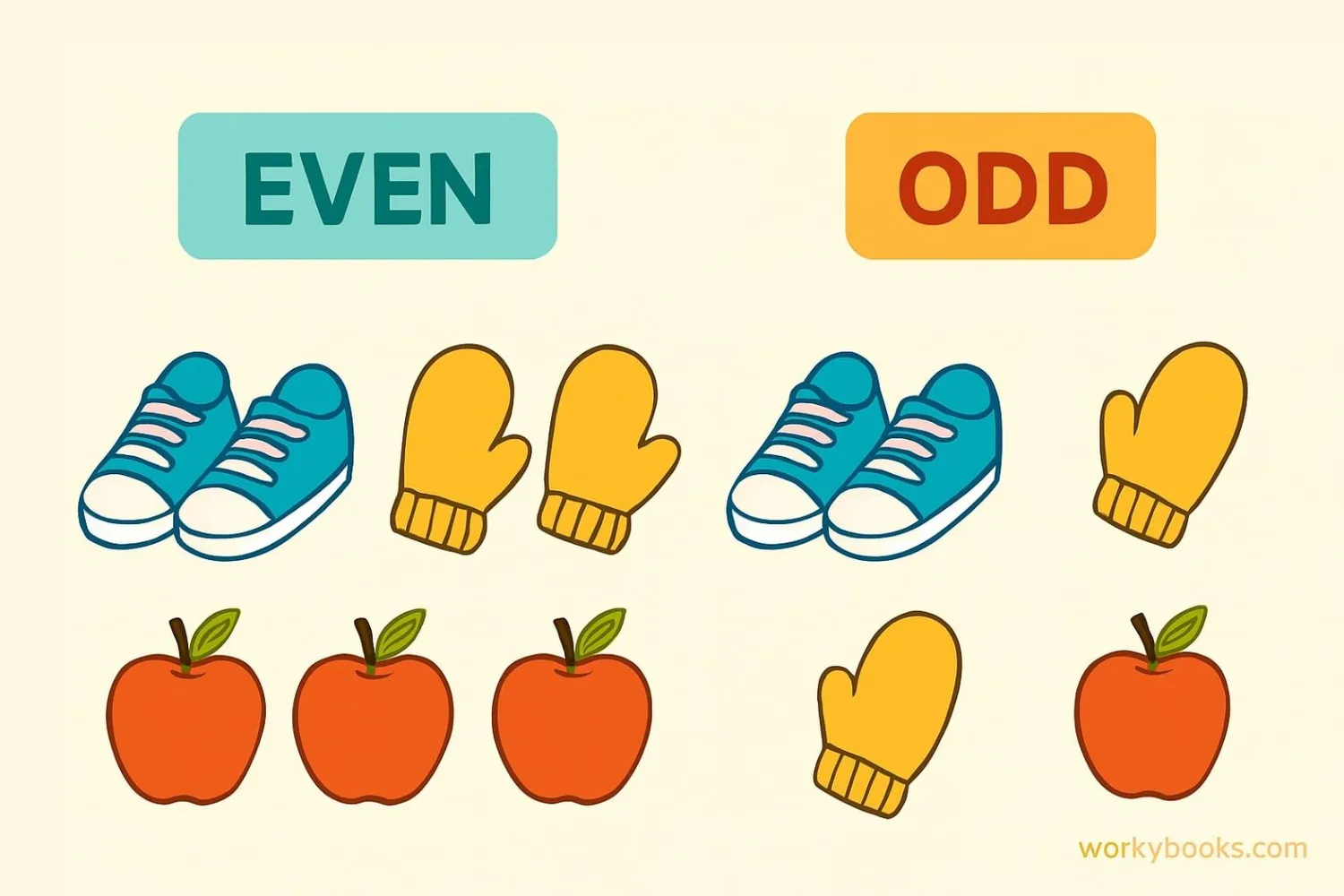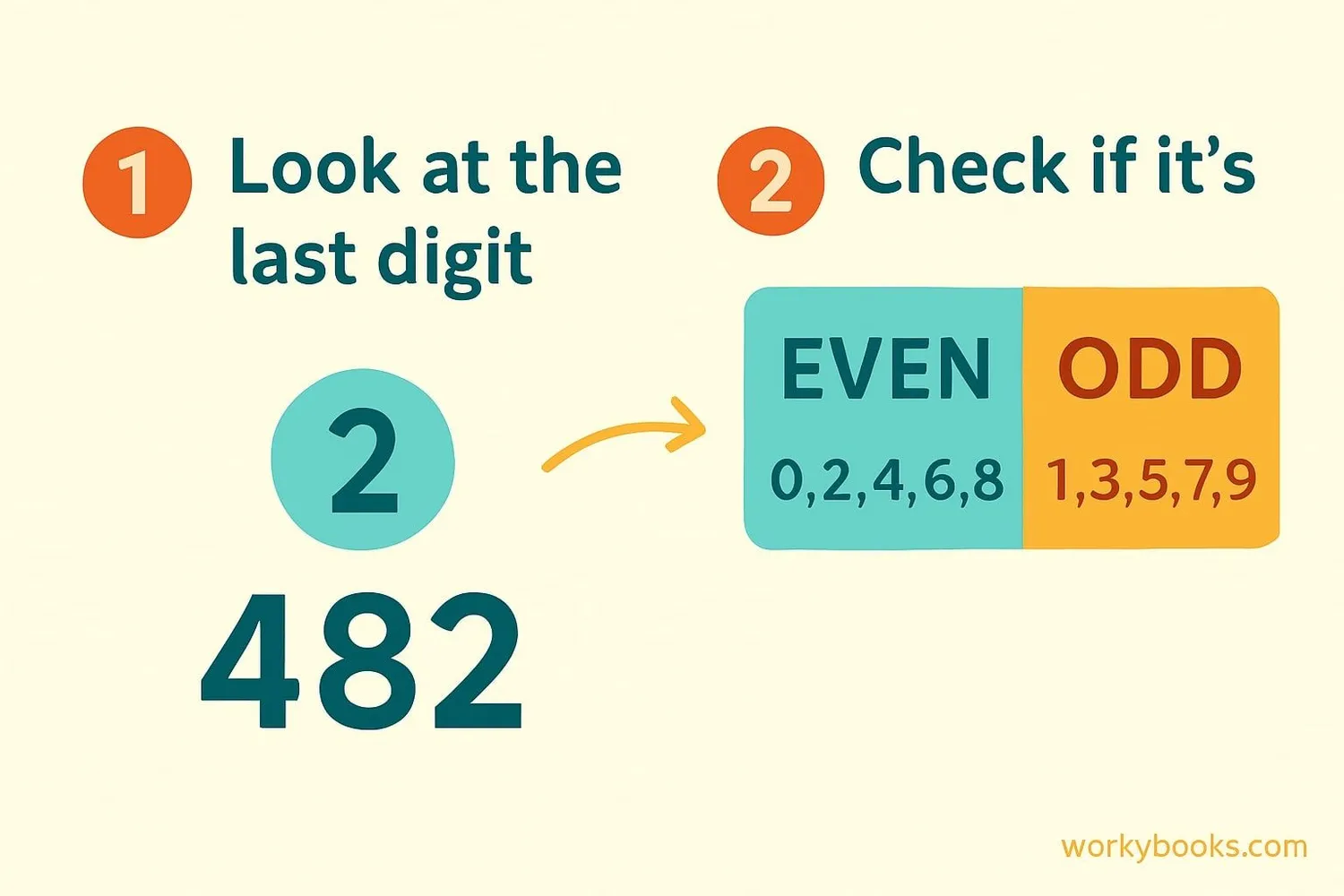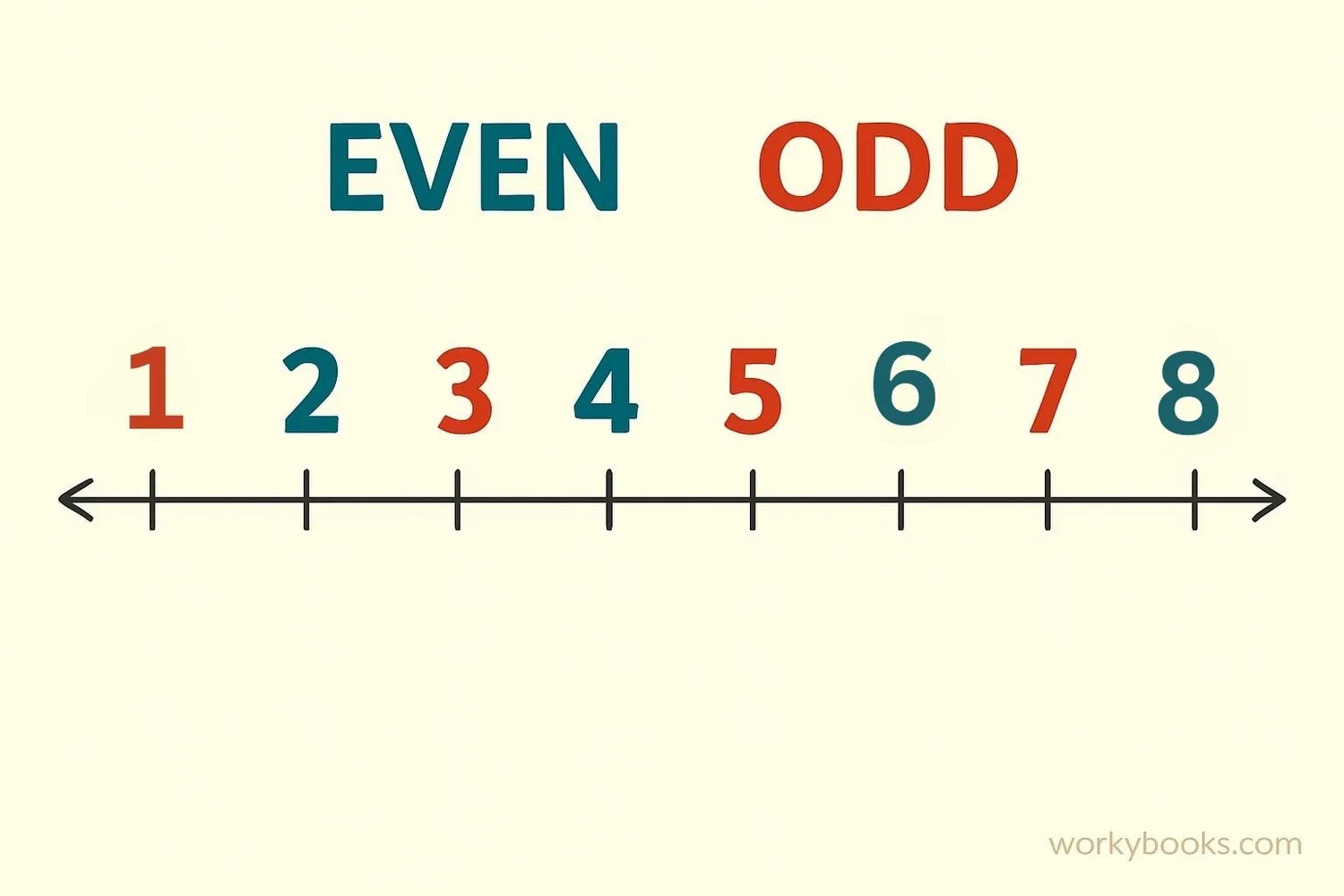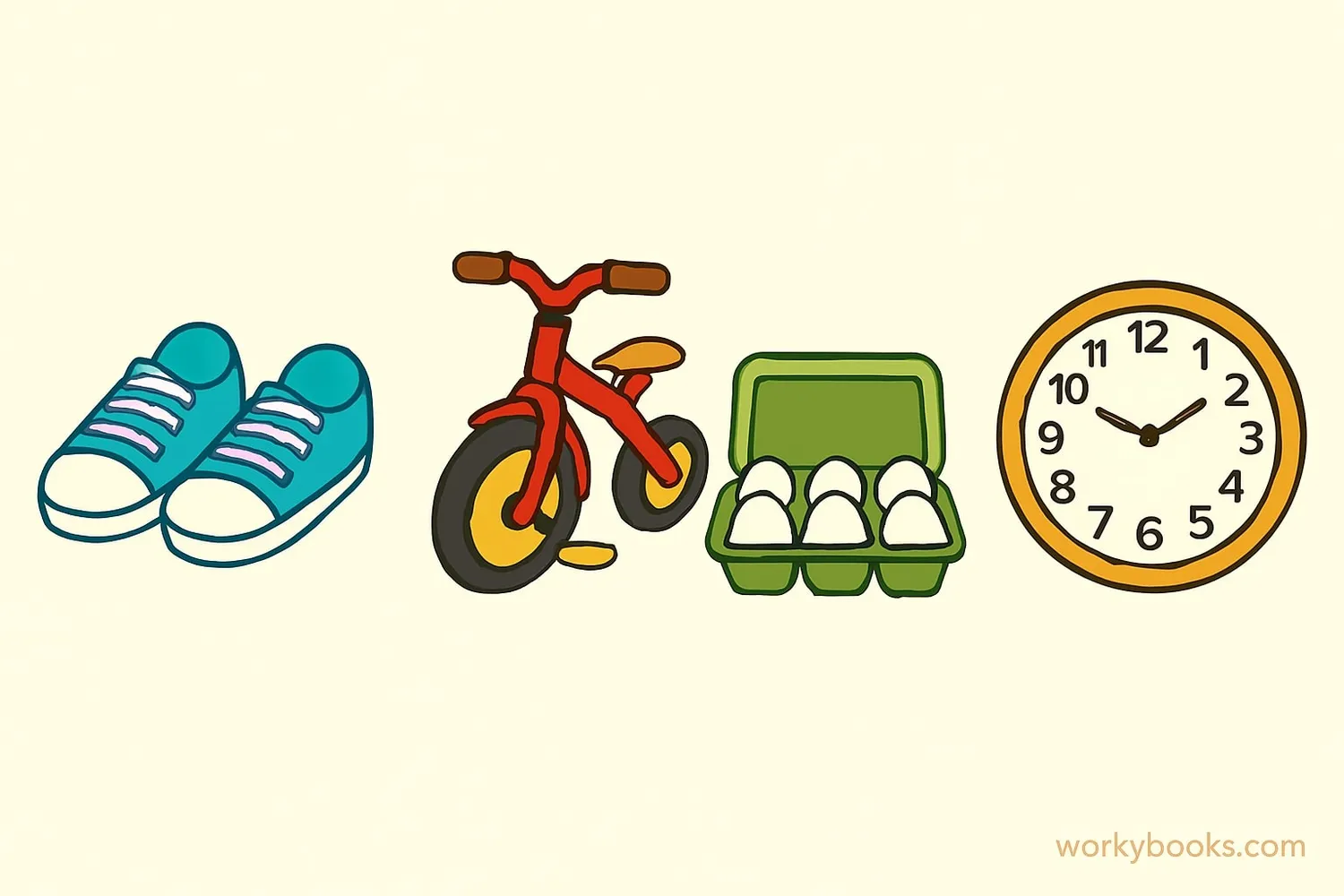Even and Odd Numbers - Definition, Examples, Quiz, FAQ, Trivia
Learn about number properties with easy explanations, examples, and practice activities
What are Even and Odd Numbers?

Even and odd numbers are special categories of whole numbers that help us understand patterns in mathematics.
Even numbers are numbers that can be divided into two equal groups without any leftovers. They always end with 0, 2, 4, 6, or 8. Examples include 2, 4, 6, 8, 10, 12, and so on.
Odd numbers are numbers that cannot be divided into two equal groups. When you try to divide them, there's always one left over. They always end with 1, 3, 5, 7, or 9. Examples include 1, 3, 5, 7, 9, 11, and so on.
Key Concept
Even numbers can be divided exactly by 2, while odd numbers cannot be divided exactly by 2.
How to Identify Even and Odd Numbers

Identifying whether a number is even or odd is simple once you know what to look for:
Step 1: Look at the last digit of the number (the ones place).
Step 2: If the last digit is 0, 2, 4, 6, or 8, then the number is even.
Step 3: If the last digit is 1, 3, 5, 7, or 9, then the number is odd.
Let's practice with some examples:
Example 1: Is 34 even or odd?
The last digit is 4, which is even (0,2,4,6,8), so 34 is even.
Example 2: Is 57 even or odd?
The last digit is 7, which is odd (1,3,5,7,9), so 57 is odd.
Remember
You only need to look at the last digit to determine if a number is even or odd, no matter how big the number is!
Even and Odd Number Patterns

Even and odd numbers follow interesting patterns that can help us predict what will happen when we add, subtract, or multiply them.
Pattern 1: Even and odd numbers alternate on the number line.
1 (odd), 2 (even), 3 (odd), 4 (even), 5 (odd), 6 (even), and so on.
Pattern 2: When we add numbers:
- Even + Even = Even (Example: 4 + 6 = 10)
- Odd + Odd = Even (Example: 3 + 5 = 8)
- Even + Odd = Odd (Example: 4 + 3 = 7)
Pattern 3: When we multiply numbers:
- Even × Even = Even (Example: 2 × 4 = 8)
- Odd × Odd = Odd (Example: 3 × 5 = 15)
- Even × Odd = Even (Example: 2 × 5 = 10)
Pattern Tip
The alternating pattern of even and odd numbers continues forever on the number line!
Examples of Even and Odd Numbers

Let's look at some examples of even and odd numbers in everyday life:
Example 1: A bicycle has 2 wheels. Since 2 is an even number, we can say it has an even number of wheels.
Example 2: A tricycle has 3 wheels. Since 3 is an odd number, we can say it has an odd number of wheels.
Example 3: Your hands have 5 fingers each. Since 5 is an odd number, each hand has an odd number of fingers.
Example 4: A standard die has 6 sides. Since 6 is an even number, it has an even number of sides.
Example 5: A week has 7 days. Since 7 is an odd number, a week has an odd number of days.
Real-World Connection
We use even and odd numbers in many everyday situations, like house numbers, license plates, and organizing things into pairs.
Practice Quiz
Test your understanding of even and odd numbers with this 5-question quiz. Choose the correct answer for each question.
Frequently Asked Questions
Here are answers to common questions about even and odd numbers:
Number Trivia
Discover interesting facts about numbers:
Ancient Recognition
The concepts of even and odd numbers date back to ancient times. The Pythagoreans in ancient Greece considered even numbers to be feminine and odd numbers to be masculine.
Special Property
The number 2 is the only even prime number. All other even numbers can be divided by 2, so they're not prime.
Cultural Significance
In many cultures, odd numbers are considered lucky. That's why you often see odd numbers of flowers in bouquets or odd numbers of steps in rituals.
Infinite Pattern
The pattern of even and odd numbers continues infinitely in both directions on the number line. There is no largest even or odd number!


